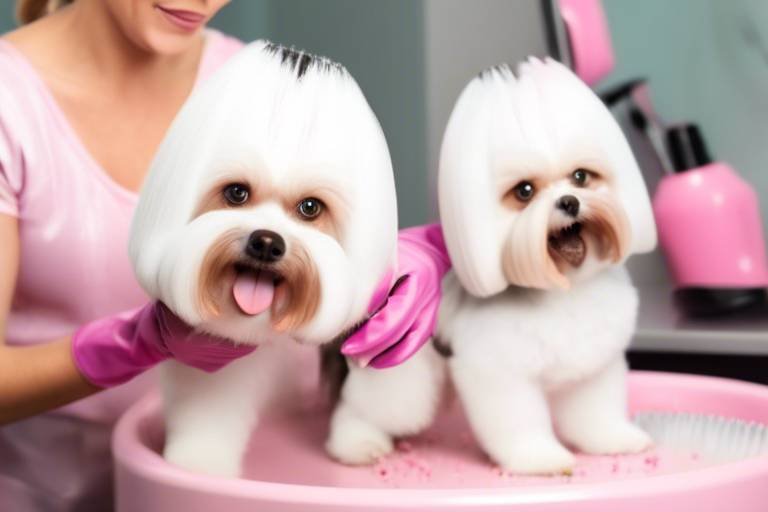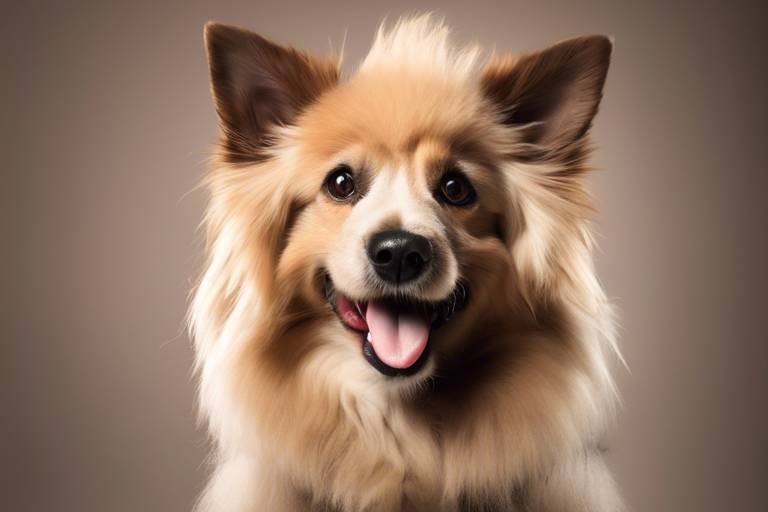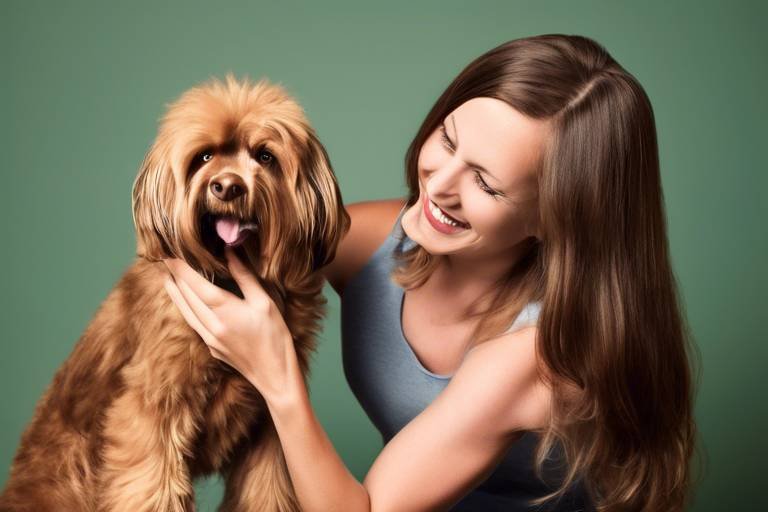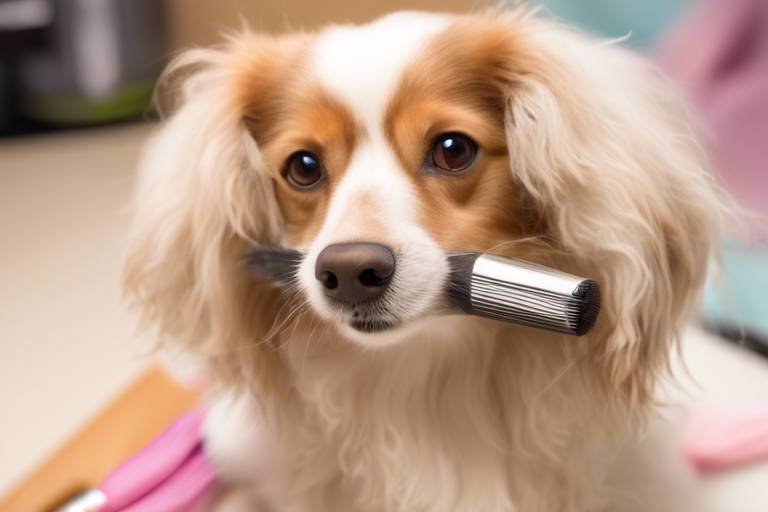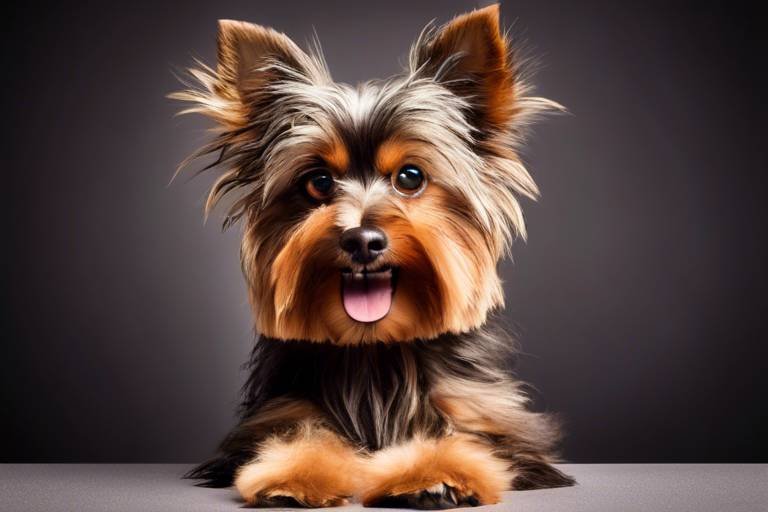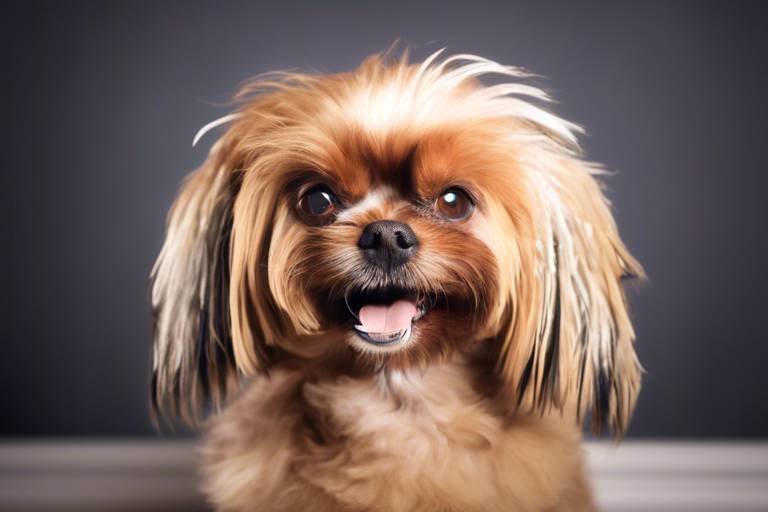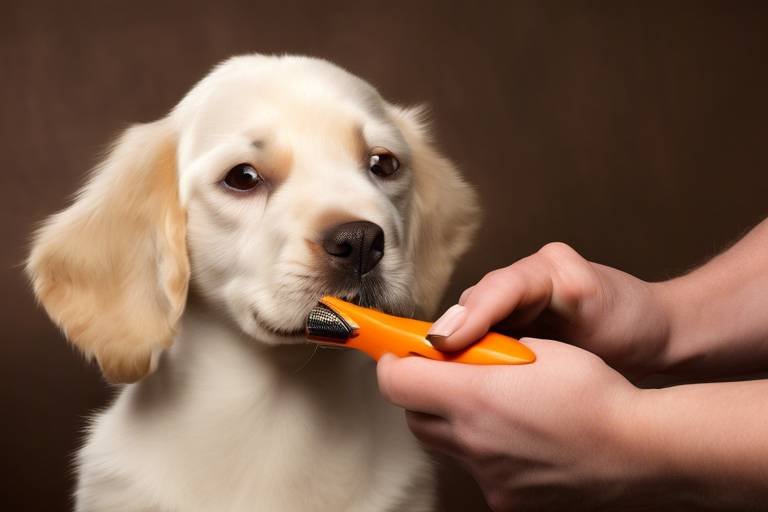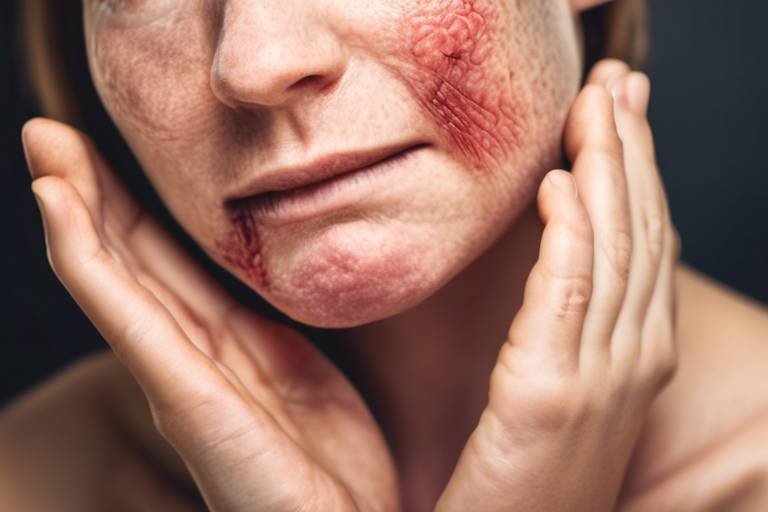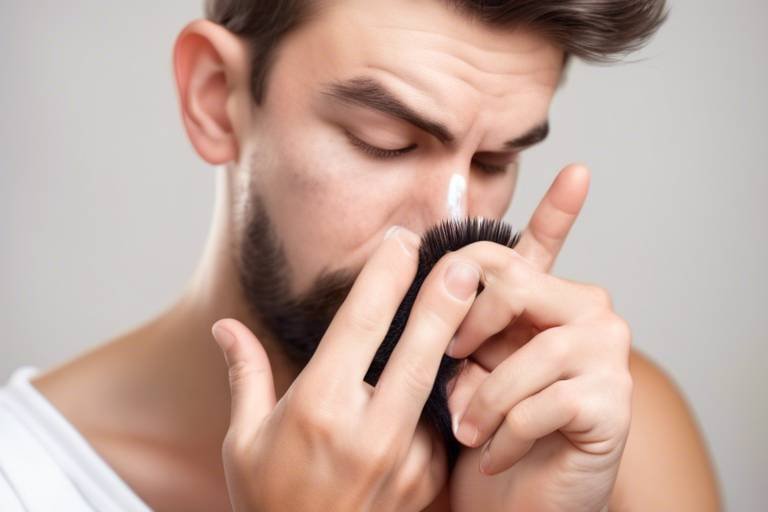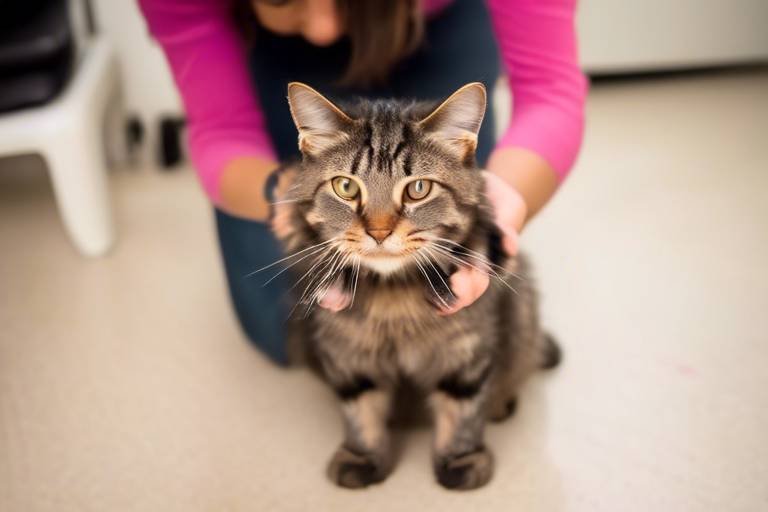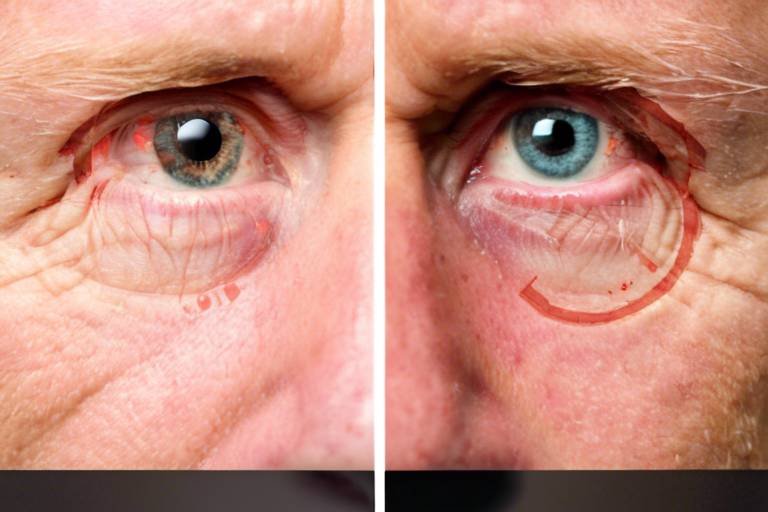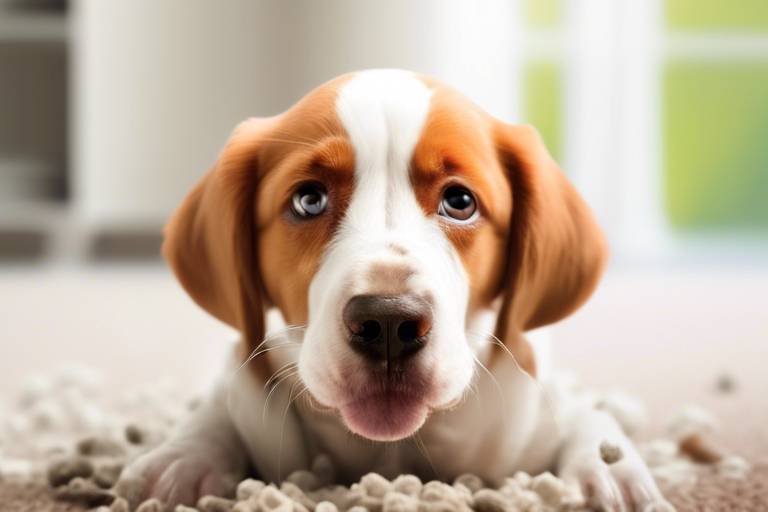The Do’s and Don’ts of Dog Grooming
Grooming your dog is more than just a beauty routine; it's a vital part of keeping your furry friend healthy and happy. Just like you wouldn't skip your own grooming, your dog deserves the same level of care. But where do you start? What are the essential practices that can make or break your grooming experience? This article dives deep into the do's and don'ts of dog grooming, ensuring that you not only keep your pet looking fabulous but also maintain their overall well-being.
Every dog is unique, and this uniqueness extends to their coat type. From the wiry fur of a terrier to the luxurious locks of a Poodle, knowing your dog's specific coat can guide you in choosing the right grooming techniques and tools. For instance, long-haired breeds need more frequent brushing to prevent mats, while short-haired breeds might require less attention. It's like knowing the difference between a fine wine and a casual beer; one requires a bit more finesse!
Having the right grooming tools is essential for a smooth and enjoyable experience, both for you and your dog. Imagine trying to cook a gourmet meal without the right kitchen gadgets—it just wouldn’t work! Similarly, using the right brushes, combs, and shampoos can make a world of difference. Here’s a quick rundown of must-have grooming tools:
- Brushes and Combs
- Shampoo and Conditioner
- Nail Clippers
- Grooming Gloves
Selecting the appropriate brushes and combs based on your dog's coat type is crucial for preventing matting and tangles. For instance, a slicker brush is perfect for long-haired breeds, while a bristle brush works wonders for short-haired dogs. It’s like choosing the right instrument for a song; the right brush can make your grooming session harmonious!
Slicker brushes are a grooming essential, especially for breeds with longer hair. They effectively remove loose fur and prevent mats, making your dog’s coat look sleek and shiny. However, it’s vital to use them gently to avoid hurting your dog. Think of it as giving your dog a nice back scratch; you want to be firm but gentle!
If your dog has a thick undercoat, an undercoat rake is your best friend. These specialized tools help remove dead hair and prevent excessive shedding. To use one effectively, start from the back and work your way forward, always being mindful of your dog's comfort. It’s like raking leaves in the fall; you want to be thorough without causing a mess!
Choosing the right shampoo and conditioner is just as important as selecting the right brush. A good quality product can make your dog's coat shiny and healthy. Look for shampoos that are formulated for your dog's specific needs—whether they have sensitive skin, allergies, or just need a little extra shine. It’s like picking out the perfect outfit; the right choice can really make a difference!
Regular grooming is essential for your dog’s well-being. It's not just about aesthetics; grooming helps to remove dirt, debris, and loose hair, keeping your dog comfortable and healthy. Establishing a consistent grooming schedule can also help your dog get used to the process, making it a positive experience for both of you. Think of it as setting a routine for your morning coffee; it becomes a comforting ritual!
The frequency of grooming largely depends on your dog's breed and coat type. Long-haired breeds may require grooming every few days, while short-haired breeds might only need it once a week. Understanding these guidelines can help keep your dog looking their best without overwhelming them.
Recognizing when your dog needs grooming can save you both a lot of discomfort. Look for signs such as excessive shedding, mats in the fur, or an unpleasant odor. If your dog seems to be scratching more than usual, it might be time for a grooming session. Just like you would notice when your favorite shirt needs a wash, your dog will let you know when they need some TLC!
Even seasoned pet owners can make mistakes that can harm their dogs during grooming. It’s essential to be aware of these pitfalls to ensure a better experience. For instance, overbathing your dog can strip their coat of natural oils, leading to dry skin. Aim for a balanced bathing schedule, and always use products designed for dogs.
Bathing your dog too frequently can do more harm than good. Instead of a shiny coat, you may end up with dry, flaky skin. Stick to a bathing routine that suits your dog's needs, typically every month or so, unless they get into something particularly messy!
Nail care is often overlooked but is crucial for your dog's comfort. Long nails can cause pain and lead to mobility issues. Regular trimming is essential, and if you're unsure how to do it safely, consult a professional groomer or your veterinarian. It's like keeping your shoes polished; it may seem minor, but it makes a world of difference!
- How often should I groom my dog? - It depends on the breed and coat type. Long-haired breeds may need grooming every few days, while short-haired breeds can be groomed weekly.
- What tools do I need for grooming? - Essential tools include brushes, combs, shampoo, conditioner, and nail clippers.
- Can I use human shampoo on my dog? - No, human shampoos can be too harsh for a dog's skin. Always use products specifically formulated for dogs.
- How can I make grooming enjoyable for my dog? - Start slowly, use treats, and create a comfortable environment to help your dog associate grooming with positive experiences.

Understanding Your Dog’s Coat Type
When it comes to grooming your furry friend, one of the most critical aspects to consider is their coat type. Just like humans have different hair types that require specific care, dogs come with a variety of coats that demand tailored grooming techniques. Understanding your dog's coat type not only makes the grooming process smoother but also ensures that your pup stays healthy and happy.
There are several distinct coat types you might encounter, each with its own grooming needs. For instance, long-haired breeds like the Afghan Hound or Shih Tzu require regular brushing to prevent tangles and mats, while short-haired breeds such as Beagles or Boxers may need less frequent grooming but still benefit from occasional brushing to remove loose fur and distribute natural oils.
Here’s a quick breakdown of the common coat types:
| Coat Type | Examples | Grooming Needs |
|---|---|---|
| Long Hair | Afghan Hound, Shih Tzu | Frequent brushing to prevent mats |
| Short Hair | Beagle, Boxer | Occasional brushing; minimal grooming |
| Curly Hair | Poodle, Bichon Frise | Regular grooming to prevent matting |
| Wire Hair | Scottish Terrier, Fox Terrier | Hand stripping and occasional brushing |
Additionally, some breeds have a double coat, which consists of a soft undercoat and a tougher outer coat. Breeds like the Golden Retriever and Siberian Husky fall into this category. Double-coated dogs require special attention during shedding seasons, as their undercoat can come out in clumps, leading to a messy home if not managed properly. Regular brushing can help minimize shedding and keep their coat healthy.
By identifying your dog’s specific coat type, you can select the right grooming tools and techniques. For instance, using the wrong brush can lead to discomfort or even skin irritation for your dog. Therefore, investing time in understanding your dog's coat will pay off in the long run, resulting in a happier, healthier pup.
So, the next time you think about grooming, take a moment to consider your dog's unique coat type. It’s not just about aesthetics; it’s about their overall well-being. After all, a well-groomed dog is a happy dog!
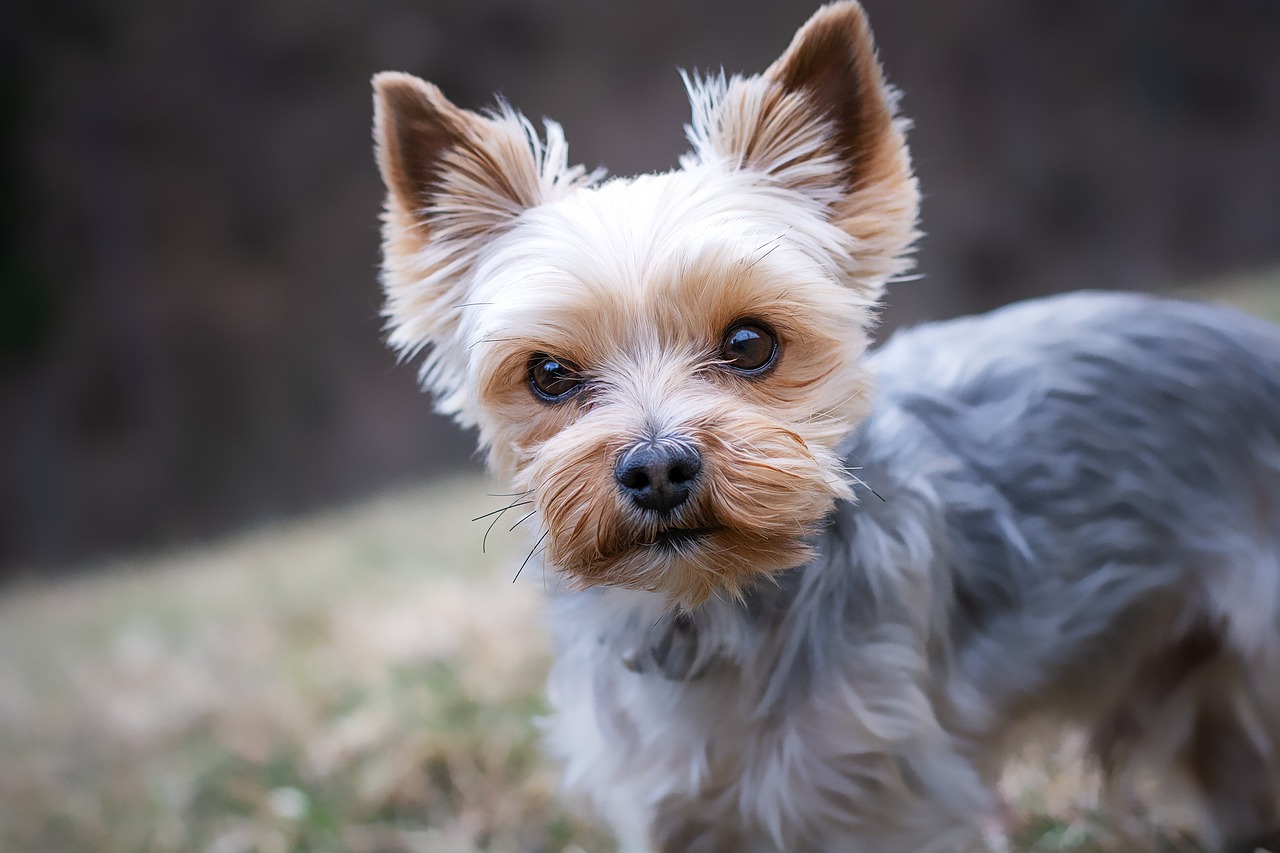
Essential Grooming Tools
When it comes to grooming your beloved canine companion, having the right tools can make all the difference. Just like a chef needs the right knives to create a culinary masterpiece, you need specific grooming tools to keep your dog's coat healthy and looking fabulous. From brushes to shampoos, each tool serves a unique purpose and choosing the right ones can turn grooming from a chore into a delightful bonding experience. So, let’s dive into the must-have tools that will ensure your furry friend is not just clean but also comfortable and happy.
First and foremost, brushes and combs are essential for maintaining your dog's coat. Depending on your dog's coat type—whether it's short, long, curly, or wiry—the right brush can help prevent matting and keep their fur looking its best. For instance, if you have a long-haired breed, a slicker brush is a game changer. It’s designed to remove loose hair and prevent tangles without hurting your dog. On the other hand, if your dog has a thick undercoat, an undercoat rake is indispensable. This tool helps to remove dead fur and reduces shedding, which is a win-win for both you and your home!
Understanding the different types of brushes can help you choose the best one for your dog's needs. Here’s a quick breakdown of some common types:
| Brush Type | Best For | Benefits |
|---|---|---|
| Slicker Brush | Long-haired breeds | Removes loose fur, prevents matting |
| Undercoat Rake | Thick-coated breeds | Removes dead undercoat, reduces shedding |
| Bristle Brush | Short-haired breeds | Distributes natural oils, adds shine |
Now, let’s talk about shampoos and conditioners. The right cleaning products are crucial for your dog's skin and coat health. It’s essential to choose a shampoo that is specifically formulated for dogs, as human shampoos can be too harsh. Look for natural ingredients that are gentle on their skin. Conditioners can also help, especially for breeds with long or curly coats, as they provide added moisture and help detangle fur.
Lastly, don’t forget about nail clippers and ear cleaners. Keeping your dog's nails trimmed is just as important as grooming their coat. Overgrown nails can lead to discomfort and even pain for your furry friend. Regular nail trimming can help maintain their overall health. Ear cleaning is another often-overlooked aspect of grooming. Using a gentle ear cleaner can help prevent infections and keep your dog’s ears fresh.
In conclusion, having the right grooming tools is essential for maintaining your dog's health and happiness. By investing in quality brushes, shampoos, and other grooming supplies, you can create a positive grooming experience that strengthens the bond between you and your pet. Remember, grooming is not just about aesthetics; it’s about ensuring your dog feels comfortable and loved!
- How often should I groom my dog? The frequency depends on your dog's coat type. Long-haired breeds may need grooming several times a week, while short-haired breeds may only need it once a month.
- What if my dog doesn’t like being groomed? Start slowly and make grooming a positive experience with treats and praise. Gradually increase the duration of grooming sessions as your dog becomes more comfortable.
- Can I use human shampoo on my dog? No, human shampoos can be too harsh for dogs. Always use products specifically designed for canine use.
Brushes and Combs
When it comes to grooming your furry friend, selecting the right is paramount. Different breeds have unique coat types, and using the appropriate tools can make all the difference in maintaining a healthy and beautiful coat. Imagine trying to untangle a necklace with the wrong tools—frustrating, right? The same goes for your dog's grooming routine. Using the wrong brush can lead to discomfort for your pet and ineffective grooming. So, let's dive into the world of brushes and combs!
First off, it's essential to understand the different types of brushes available and the specific purposes they serve. For instance, slicker brushes are fantastic for long-haired breeds, while bristle brushes work wonders on short-haired dogs. Each brush has its own unique function:
| Type of Brush | Best For | Purpose |
|---|---|---|
| Slicker Brush | Long-haired breeds | Removes loose fur and prevents mats |
| Undercoat Rake | Thick-coated breeds | Removes undercoat and reduces shedding |
| Bristle Brush | Short-haired breeds | Distributes natural oils and adds shine |
| Pin Brush | Medium to long-haired breeds | Untangles fur and smooths the coat |
Using the right brush not only keeps your dog looking sharp but also promotes a healthy coat and skin. When brushing, always be gentle and use smooth strokes. Think of it as giving your dog a relaxing massage; nobody likes a rough touch! You want to make this grooming experience enjoyable for both you and your pup.
Additionally, combs are another vital tool in your grooming arsenal. They can help you reach areas that brushes might miss, particularly around the ears and face. A fine-toothed comb is perfect for detangling and removing debris, while a wide-toothed comb is excellent for smoothing out larger knots. The key is to choose a comb that complements the brush you are using, as they work hand-in-hand to keep your dog's coat in top shape.
In conclusion, investing in the right brushes and combs tailored to your dog's coat type is crucial for effective grooming. It not only prevents mats and tangles but also enhances your dog's overall appearance and comfort. So, equip yourself with the right tools and turn grooming time into a bonding experience with your furry friend!
- How often should I brush my dog? This depends on the breed and coat type. Long-haired breeds may require daily brushing, while short-haired breeds might only need it once a week.
- Can I use human brushes on my dog? It's not recommended, as human brushes are not designed for dog fur and can cause discomfort or damage.
- What should I do if my dog hates being brushed? Start slowly, using treats to create a positive association with grooming. Gradually increase the brushing time as your dog becomes more comfortable.
Slicker Brushes
Slicker brushes are a must-have tool in your dog grooming arsenal, especially if your furry friend has a long or thick coat. These brushes are designed with fine, short wires close together on a flat surface, making them incredibly effective at removing loose hair and preventing mats. Imagine trying to untangle a necklace that’s been in a drawer for too long; that’s what your dog’s coat can feel like without the right grooming tools. By using a slicker brush, you are essentially giving your dog a spa day while keeping their coat healthy and shiny.
When using a slicker brush, the key is to be gentle yet thorough. Start at the neck and work your way down to the tail, using short strokes in the direction of hair growth. This technique not only helps in removing dirt and debris but also stimulates the skin, promoting natural oil production. It’s like giving your dog a mini massage! However, be cautious around sensitive areas like the belly and behind the ears. If you encounter any tangles, don’t just yank them out; instead, work them through gently to avoid causing discomfort.
Now, you might be wondering, "How often should I use a slicker brush on my dog?" Well, it largely depends on your dog’s coat type. For long-haired breeds, daily brushing is ideal, while medium-haired dogs can benefit from a few times a week. Short-haired dogs, on the other hand, may only need a good slicker brush session once a month. Regardless of the frequency, regular use of a slicker brush will keep your dog looking fabulous and feeling comfortable.
Here’s a quick comparison of slicker brushes based on their sizes and uses:
| Brush Size | Ideal For | Best Use |
|---|---|---|
| Small | Puppies and small breeds | Detailing and sensitive areas |
| Medium | Medium-sized breeds | General grooming |
| Large | Large breeds | Overall brushing and mat removal |
In summary, incorporating a slicker brush into your grooming routine is a game-changer. Not only does it help in maintaining a beautiful coat, but it also strengthens the bond between you and your furry companion. They’ll love the attention, and you’ll love the results!
- How do I choose the right slicker brush for my dog? Look for a brush that matches your dog’s size and coat type. Smaller brushes are great for puppies, while larger brushes work well for bigger breeds.
- Can I use a slicker brush on wet fur? It’s best to use a slicker brush on dry fur to avoid pulling and causing discomfort.
- How can I keep my slicker brush clean? Regularly remove hair from the brush and wash it with mild soap and water to keep it in good condition.
Undercoat Rakes
When it comes to grooming your furry friend, are indispensable tools, especially for breeds with thick undercoats. These specialized rakes are designed to penetrate deep into the coat, effectively removing loose fur and undercoat without damaging the outer layer. Imagine trying to untangle a ball of yarn; the right tools can make all the difference. Similarly, using an undercoat rake can prevent mats and tangles, ensuring your dog's coat remains healthy and vibrant.
Using an undercoat rake is not just about aesthetics; it's also about maintaining your dog's skin health. A well-groomed coat helps to promote better air circulation and reduces the risk of skin irritations. When you rake through your dog's fur, you not only remove dead hair but also help distribute natural oils throughout the coat, which keeps it shiny and nourished. However, it’s essential to know how to use these tools correctly to avoid hurting your dog.
To get the most out of an undercoat rake, follow these simple tips:
- Always start with a clean and dry coat. Bathing your dog before grooming can help, but ensure the coat is completely dry before using the rake.
- Work in sections, starting from the back and moving towards the front. This method helps you cover all areas without overwhelming your pup.
- Be gentle! Use light pressure to avoid scratching your dog's skin. If your dog seems uncomfortable, take a break and offer some affection to reassure them.
Additionally, consider the type of undercoat rake you choose. There are various designs available, each tailored to different coat types. For example, a rake with wider teeth is suitable for dogs with thick undercoats, while one with finer teeth works better for shorter-haired breeds. Investing in the right rake can make your grooming sessions more efficient and enjoyable for both you and your dog.
In summary, undercoat rakes are a vital part of your grooming toolkit if you have a dog with a thick undercoat. They help maintain a healthy coat, prevent mats, and ensure that your dog feels comfortable and happy. Regular use of an undercoat rake can make a world of difference, transforming grooming from a chore into a bonding experience.
1. How often should I use an undercoat rake on my dog?
The frequency depends on your dog's breed and coat type. For dogs with thick undercoats, using the rake once a week is generally recommended. However, during shedding seasons, you may need to use it more often to manage loose hair.
2. Can I use an undercoat rake on a wet coat?
It's best to use an undercoat rake on a dry coat. Using it on a wet coat can lead to pulling and discomfort for your dog. Always ensure the coat is completely dry before grooming.
3. What should I do if my dog doesn't like the rake?
If your dog shows signs of discomfort or anxiety, take a break and try to make the experience more enjoyable. Use treats, praise, and gentle strokes to build their confidence. You may also want to consult a professional groomer for tips.
Shampoo and Conditioner Choices
When it comes to maintaining your dog's coat health, choosing the right shampoo and conditioner is absolutely vital. Just like humans, dogs have different skin types and coat needs, which can significantly influence how often and what products you should use. For instance, if your dog has a sensitive skin condition, you might want to opt for a hypoallergenic shampoo that is free from harsh chemicals and fragrances. On the other hand, dogs with oily coats may benefit from a clarifying shampoo that helps remove excess oil and dirt.
It's essential to consider the ingredients in the products you choose. Look for natural ingredients like oatmeal, aloe vera, and coconut oil, which are known to soothe and nourish the skin. Avoid products that contain sulfates, parabens, or artificial colors, as these can irritate your dog's skin and strip away its natural oils. Additionally, if your furry friend has specific needs, such as being prone to allergies or having a particular skin condition, consult your veterinarian for personalized recommendations.
To help you navigate the vast array of shampoo and conditioner options available, here’s a quick breakdown of some popular types:
| Type | Best For | Key Ingredients |
|---|---|---|
| Hypoallergenic Shampoo | Sensitive skin | Oatmeal, Aloe Vera |
| Clarifying Shampoo | Oily coats | Coconut Oil, Tea Tree Oil |
| Moisturizing Conditioner | Dry skin | Shea Butter, Jojoba Oil |
| Flea and Tick Shampoo | Flea/Tick infestations | Natural repellents like Neem Oil |
After shampooing, using a conditioner can help restore moisture and make your dog's coat easier to manage. Conditioners work by coating the hair shaft, which can reduce static and make it softer and shinier. If your dog has a long or thick coat, a leave-in conditioner might be particularly beneficial, as it can provide continuous hydration and protection throughout the day.
In summary, selecting the right shampoo and conditioner for your dog involves understanding their specific needs and being mindful of the ingredients in the products you choose. Regular grooming with the appropriate products can lead to a healthier, happier pup!
- How often should I bathe my dog? It depends on the breed and coat type. Generally, every 4-6 weeks is a good rule of thumb, but consult your vet for specific advice.
- Can I use human shampoo on my dog? It's not recommended as human shampoos can disrupt a dog's skin pH balance. Always use dog-specific products.
- What should I do if my dog has a reaction to shampoo? Stop using the product immediately and consult your veterinarian for advice on treatment and alternative products.
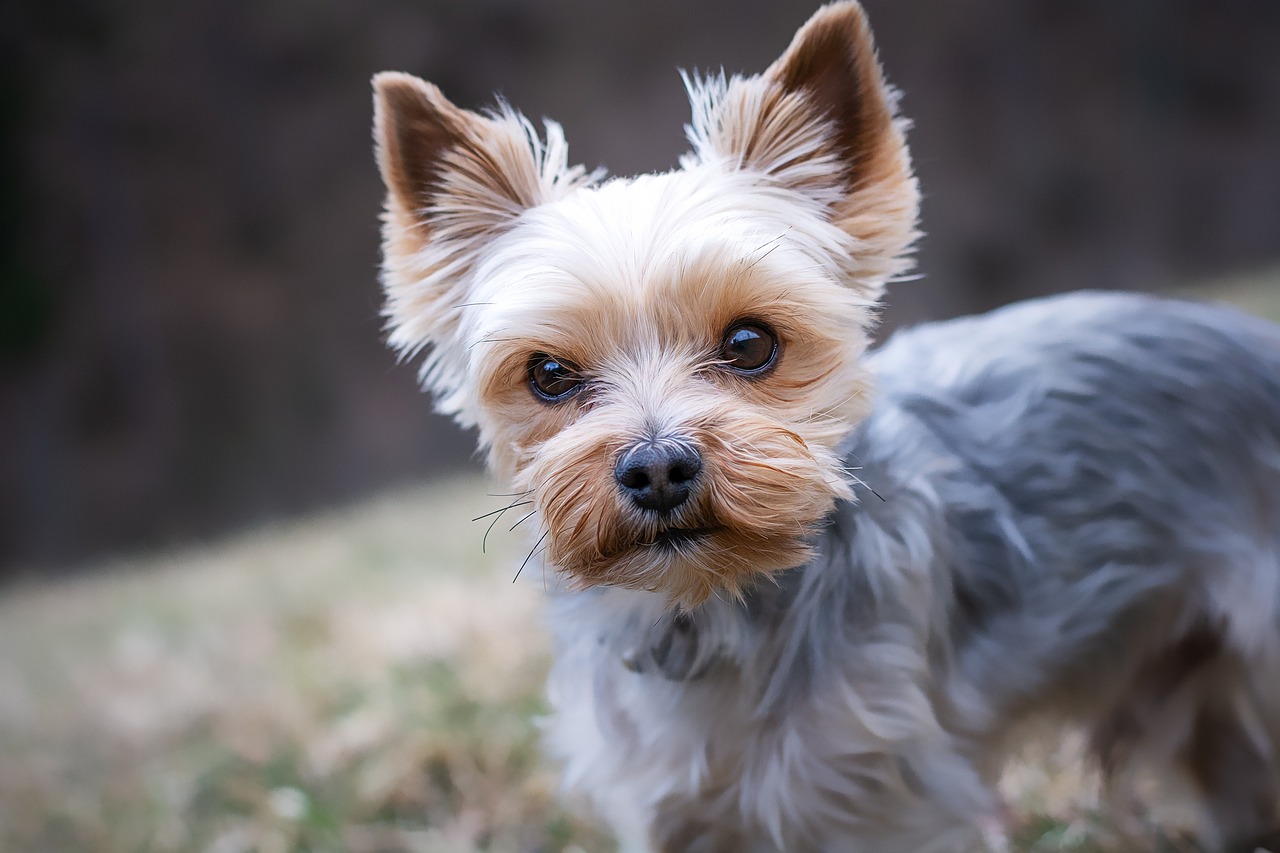
Establishing a Grooming Routine
Creating a consistent grooming routine for your dog is not just about aesthetics; it’s a vital part of their overall health and happiness. Think of grooming as a ritual that strengthens your bond with your furry friend. Just like we humans need regular haircuts and skincare, dogs require grooming to keep their coats clean, shiny, and free from mats. So, how do you establish a grooming routine that works for both you and your pup?
First, consider your dog's breed and coat type. Different breeds have varying grooming needs. For example, long-haired breeds such as Yorkshire Terriers or Shih Tzus require more frequent grooming compared to short-haired breeds like Beagles or Boxers. Understanding these differences is crucial in determining how often you should schedule grooming sessions.
Next, set a regular schedule. Whether it’s weekly, bi-weekly, or monthly, consistency is key. You might find it helpful to mark grooming days on your calendar, just like you would for a dentist appointment! This way, you won’t forget, and your dog will become accustomed to the routine. Remember, grooming should be a positive experience. Use treats and praise to make it enjoyable for your dog.
Here’s a quick guide to help you establish a grooming routine based on your dog's coat type:
| Coat Type | Recommended Grooming Frequency |
|---|---|
| Short-haired | Every 4-6 weeks |
| Medium-haired | Every 3-4 weeks |
| Long-haired | Every 2-3 weeks |
| Curly-haired | Every 4-6 weeks |
In addition to regular grooming, watch for signs that your dog needs a grooming session outside of the scheduled times. For instance, if you notice excessive shedding, mats forming, or an unpleasant odor, it’s time to act! Dogs communicate with us in their own way, and paying attention to these signals can help maintain their comfort and health.
Lastly, don’t forget to incorporate other grooming tasks into your routine. Nail trimming, ear cleaning, and dental care are just as important as brushing and bathing. Think of grooming as a holistic approach to your dog’s well-being. By establishing a comprehensive grooming routine, you’re not just keeping them looking great; you’re also ensuring they feel great!
- How often should I bathe my dog? It depends on your dog's coat type and lifestyle. Generally, bathing every 4-6 weeks is sufficient, but consult with your vet for personalized advice.
- What tools do I need for grooming? Basic tools include brushes, combs, shampoo, conditioner, and nail clippers. The specific tools depend on your dog's coat type.
- Can I groom my dog at home? Absolutely! With the right tools and knowledge, you can effectively groom your dog at home. Just make sure to take your time and be gentle.
- When should I seek professional grooming? If your dog has a complex coat type or if you're unsure about grooming techniques, professional groomers can provide expert care.
Frequency of Grooming
When it comes to grooming your furry friend, understanding the frequency of grooming sessions is key to keeping them healthy and happy. Just like humans, dogs have different needs based on their breed, age, and coat type. So, how often should you groom your dog? The answer isn't one-size-fits-all, but here are some general guidelines that can help you establish the right routine.
For instance, breeds with long hair, such as Golden Retrievers or Shih Tzus, often require more frequent grooming—ideally every 4 to 6 weeks. This not only helps prevent mats and tangles but also keeps their coat looking shiny and healthy. On the other hand, short-haired breeds like Beagles or Boxers might only need grooming every 8 to 12 weeks. Their coats are easier to manage, but they still benefit from regular brushing to remove loose hair and dander.
Additionally, factors such as the dog's activity level and environment can influence grooming frequency. For example, if your dog loves rolling around in the mud or exploring the outdoors, you might need to groom them more often to keep their coat clean and free of debris. Conversely, if your pooch is more of a couch potato, they may not require as much grooming.
Here’s a quick reference table to help you understand the general grooming frequency based on coat type:
| Coat Type | Recommended Grooming Frequency |
|---|---|
| Long Hair | Every 4-6 weeks |
| Medium Hair | Every 6-8 weeks |
| Short Hair | Every 8-12 weeks |
| Curly Hair | Every 4-6 weeks |
It's also crucial to pay attention to your dog's specific needs. Some dogs may require more frequent grooming due to shedding, skin conditions, or other health issues. Always keep an eye out for signs that your dog needs a grooming session, such as excessive shedding, a dull coat, or mats forming in their fur.
Ultimately, establishing a grooming routine that works for both you and your dog will not only ensure they look their best but also strengthen the bond between you two. So grab those brushes, and let the grooming adventures begin!
- How often should I bathe my dog? - Most dogs only need a bath every 4-6 weeks, but it can vary based on their activity level and coat type.
- What if I notice mats in my dog's coat? - If you notice mats, it's best to address them immediately. Use a slicker brush or seek professional help if they're severe.
- Can I groom my dog myself? - Absolutely! With the right tools and techniques, you can groom your dog at home. Just be patient and take your time.
Signs Your Dog Needs Grooming
As a devoted dog owner, you might wonder, "How can I tell if my furry friend needs a grooming session?" Well, just like us, dogs have their own ways of signaling their grooming needs. Paying attention to these signs can not only keep your dog looking fabulous but also ensure their overall health and happiness. So, let’s dive into some telltale indicators that it’s time to grab those grooming tools!
First and foremost, if you notice your dog’s coat looking unruly or matted, it’s definitely time for a grooming session. Mats can trap dirt and moisture, leading to skin irritations and infections. If you’re struggling to run your fingers through their fur without encountering tangles, that’s a clear sign your pup needs some TLC. Long-haired breeds, in particular, are prone to mats, so keep an eye out for any clumps or knots.
Another sign is excessive shedding. If you find yourself vacuuming up piles of fur daily or your clothes are constantly covered in dog hair, it may be time for a good brushing. Regular grooming helps manage shedding and keeps your home cleaner. Plus, it’s a great way to bond with your dog while keeping them looking sharp!
Don’t forget about your dog’s nails! If you hear that clicking sound as they walk on hard surfaces, it’s a sure sign that their nails are too long. Overgrown nails can cause discomfort and even lead to painful injuries. Regular nail trimming is essential to keep your pup comfortable and healthy.
Additionally, pay attention to your dog’s ears. If they seem to be shaking their head more than usual or if you notice a foul odor coming from their ears, it may indicate a need for cleaning. Dirty ears can lead to infections, so it’s important to keep them clean and free of debris.
Lastly, if your dog is scratching or licking excessively, it could be a sign of skin irritation or allergies, which can be exacerbated by a lack of grooming. Regular grooming helps remove allergens and dirt from their coat, promoting healthier skin. So, if your pooch seems a bit too itchy, consider scheduling a grooming session soon!
Recognizing these signs can help you maintain your dog's grooming needs effectively. Regular grooming not only keeps your dog looking good but also contributes to their overall health. So, keep an eye out for those mats, shedding, long nails, dirty ears, and excessive scratching. Your furry friend will thank you for it!
Q: How often should I groom my dog?
A: The frequency of grooming depends on your dog's breed and coat type. Long-haired breeds may need grooming every few days, while short-haired breeds might only require grooming once a week.
Q: Can I groom my dog at home?
A: Absolutely! With the right tools and techniques, you can groom your dog at home. However, if you're unsure about specific grooming tasks, like nail trimming, consider seeking professional help.
Q: What if my dog doesn't like being groomed?
A: Many dogs may initially resist grooming. To help them get used to it, start with short sessions and positive reinforcement, like treats and praise. Gradually increase the time as they become more comfortable.

Avoiding Common Grooming Mistakes
When it comes to grooming your furry friend, it’s easy to make mistakes that can lead to discomfort or even health issues for your dog. One of the most common pitfalls is overbathing. While it might seem like a good idea to keep your pup smelling fresh, bathing them too frequently can strip their coat of essential natural oils. These oils are crucial for maintaining a healthy, shiny coat and protecting their skin from irritations. Instead of bathing your dog every week, consider doing it every 4 to 6 weeks, unless they get into something particularly messy. Remember, dogs generally groom themselves and may only need a bath when they’re particularly dirty or smelly.
Another mistake many pet owners make is neglecting nail care. Long nails can be uncomfortable for your dog and can even lead to painful conditions or injuries. Regular nail trimming is essential, but many dog owners either forget to do it or are unsure how to do it safely. Ideally, you should aim to trim your dog's nails every 3 to 4 weeks. If you're unsure about how to trim them, consider asking your veterinarian or a professional groomer for guidance. They can demonstrate the right technique and help you feel more comfortable with the process.
Additionally, many owners underestimate the importance of ear and dental care. Just like humans, dogs can suffer from dental problems and ear infections if not properly cared for. Regularly brushing your dog’s teeth and checking their ears can prevent these issues. Use a toothbrush and toothpaste designed for dogs, and make it a part of your grooming routine. For ear care, gently wipe the outer ear with a damp cloth, and check for any signs of redness or odor that could indicate an infection.
It’s also vital to pay attention to your dog’s body language during grooming sessions. If your dog seems anxious or uncomfortable, it’s essential to take a step back. Grooming should be a positive experience, so consider using treats and praise to reward your dog for their cooperation. If your dog is particularly anxious, you might want to break grooming into smaller sessions or consult a professional groomer for help.
Lastly, investing in the right grooming tools can make a world of difference. Using the wrong brush can lead to painful tugging and matting. Make sure to choose tools that are suitable for your dog's specific coat type. For example, slicker brushes are great for long-haired breeds, while undercoat rakes work wonders for thick fur. You can find a variety of grooming tools at your local pet store or online, but always read reviews to ensure you’re getting the best for your furry friend.
- How often should I bathe my dog? - It generally depends on your dog's breed and activity level, but most dogs only need a bath every 4 to 6 weeks.
- What if my dog hates grooming? - Start slowly and use treats to create a positive association with grooming. If necessary, consult a professional groomer.
- How can I tell if my dog's nails are too long? - If you hear clicking sounds when your dog walks on hard surfaces, it’s time for a trim.
- Are there any grooming tools I should avoid? - Yes, avoid using human brushes or combs as they can cause discomfort and damage your dog's coat.
Overbathing Your Dog
When it comes to keeping our furry friends clean, it's easy to fall into the trap of thinking that more is better. However, overbathing your dog can actually do more harm than good. Just like our skin, a dog's skin produces natural oils that are essential for maintaining a healthy coat. These oils protect against environmental irritants and help to keep the skin moisturized. If you wash your dog too frequently, you risk stripping away these vital oils, leading to a dry, flaky coat and even skin irritations.
So, how often should you bathe your dog? The answer largely depends on your dog's breed, activity level, and coat type. For instance, dogs with oily coats, like Basset Hounds, may need a bath every few weeks, while breeds with water-repellent coats, like Labradors, can often go longer between baths. On the other hand, dogs that love to roll in the mud or have skin conditions may require more frequent washing. As a general guideline, many experts recommend bathing your dog every 4 to 6 weeks to maintain a healthy balance.
It's also essential to choose the right products for your dog's bath time. Not all shampoos are created equal, and some can be too harsh for your dog's sensitive skin. Look for gentle, dog-specific shampoos that are free from sulfates and parabens. If your dog has specific skin issues, consult your veterinarian for recommendations on medicated shampoos that can help.
Moreover, the bathing process itself can also affect your dog's comfort. Make sure to rinse thoroughly to remove all shampoo residue, as leftover product can lead to irritation. After the bath, consider using a conditioner that can help replenish moisture and make brushing easier. Remember, a happy dog is a clean dog, but moderation is key!
In summary, while keeping your dog clean is important, it's crucial to avoid the pitfalls of overbathing. By understanding your dog's specific needs and establishing a bathing routine that works for them, you can ensure their coat remains healthy and vibrant. So, the next time you think about giving your pup a bath, pause for a moment and consider if it's truly necessary. Your dog's skin will thank you!
- How often should I bathe my dog? It generally depends on their breed and activity level, but every 4 to 6 weeks is a good rule of thumb.
- What type of shampoo should I use? Always choose a dog-specific shampoo that is gentle and free from harsh chemicals.
- Can I use human shampoo on my dog? It's best to avoid human shampoos as they can be too harsh for a dog's skin and disrupt their natural oils.
- What if my dog has skin issues? Consult your veterinarian for recommendations on appropriate medicated shampoos.
Neglecting Nail Care
Nail care is one of those aspects of grooming that often gets overlooked, yet it's incredibly important for your dog's overall health and comfort. Just like humans, dogs need regular nail trimming to prevent discomfort and potential health issues. When nails grow too long, they can cause pain, affect your dog's walking gait, and even lead to injuries. Imagine trying to walk in shoes that are two sizes too small—it's not just uncomfortable; it can be downright painful! So, how do you ensure your furry friend’s nails are kept in tip-top shape?
First and foremost, understanding the anatomy of your dog's nails is crucial. Each nail has a quick, which is the pink part that contains blood vessels and nerves. When trimming, you should avoid cutting into this area, as it can cause bleeding and significant pain. If your dog has dark nails, it can be challenging to see the quick, so it's essential to trim small amounts gradually to avoid any mishaps.
Regular nail trimming should be a part of your grooming routine. Depending on your dog's activity level and the surfaces they walk on, you might need to trim their nails every few weeks. Dogs that walk on hard surfaces may naturally wear down their nails, while those that spend more time indoors or on soft grass may require more frequent trims. A good rule of thumb is to check their nails regularly—if you can hear them clicking on the floor, it’s time for a trim!
To make nail trimming a positive experience for your dog, start by introducing them to the process gradually. Here are a few tips to help:
- Familiarize your dog with the clippers: Let them sniff and explore the clippers before you start trimming.
- Use treats and praise: Reward your dog with treats and affection during and after the trimming session to create a positive association.
- Keep sessions short: If your dog is anxious, trim just a few nails at a time and gradually increase the number as they become more comfortable.
In addition to regular trims, keeping an eye out for signs that your dog's nails might need attention is essential. Look for signs of discomfort, such as limping or excessive licking of their paws. If you notice any of these behaviors, it’s time to schedule a grooming session. Remember, neglecting nail care can lead to serious issues, so prioritize this aspect of grooming just as you would with bathing or brushing.
Q: How often should I trim my dog's nails?
A: It generally depends on your dog's activity level, but most dogs need a trim every 3 to 6 weeks.
Q: What if my dog hates having their nails trimmed?
A: Start slowly, use treats, and create a positive environment. If needed, consult a professional groomer or veterinarian for assistance.
Q: Can I use human nail clippers on my dog?
A: While you can use them in a pinch, it's best to use clippers designed specifically for dogs to ensure safety and effectiveness.
Q: What should I do if I accidentally cut the quick?
A: Apply a styptic powder or cornstarch to stop the bleeding, and if it doesn't stop, consult your veterinarian.
Frequently Asked Questions
- How often should I groom my dog?
The frequency of grooming depends on your dog's breed and coat type. Generally, long-haired breeds may require grooming every few days, while short-haired breeds might only need it once a week. It's essential to establish a routine that works for both you and your furry friend!
- What tools do I need for grooming my dog?
Having the right tools is crucial for effective grooming. Essential tools include brushes (like slicker brushes for long-haired breeds), combs, nail clippers, and dog shampoo. Make sure to choose products that cater to your dog's specific coat type for the best results!
- Can I use human shampoo on my dog?
No, it's not advisable to use human shampoo on dogs. Human shampoos can be too harsh and strip away the natural oils in your dog's coat. Instead, opt for a specially formulated dog shampoo that is gentle and suitable for their skin.
- What are the signs that my dog needs grooming?
Look for signs like excessive shedding, mats or tangles in their coat, a bad odor, or dirty ears. If your dog is scratching more than usual or seems uncomfortable, it might be time for a grooming session!
- How can I safely trim my dog's nails?
To trim your dog's nails safely, use a pair of dog nail clippers and be careful not to cut into the quick, which can cause bleeding. It's best to trim just a little at a time and reward your dog with treats to make the process more enjoyable for them.
- Is it okay to bathe my dog too often?
Yes, overbathing can strip your dog's coat of its natural oils, leading to dry skin and irritation. Most dogs only need a bath every 4-6 weeks, but this can vary based on their activity level and coat type.
- What should I do if my dog hates grooming?
If your dog dislikes grooming, try to make it a positive experience. Start slowly, use treats, and keep sessions short. Gradually introduce them to the tools and techniques to help them get comfortable. Patience is key!

